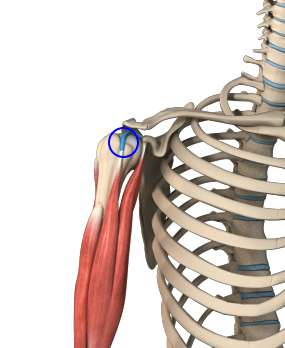
What is the Long Head of the Biceps Tendon?
Your biceps muscle has two heads, a long head, and a short head, which are both attached to the shoulder. The long head of the biceps tendon is a tough band of connective fibrous tissue that attaches the long head of the biceps to the top of the shoulder socket.
Causes of Long Head Biceps Tendon Rupture
Overuse and injury of the biceps muscle during weightlifting or any repetitive physical activity causes fraying and eventual long head biceps tendon rupture. It can also occur due to falling on an outstretched arm.
Risks Factors for Long Head Biceps Tendon Rupture
The risk factors for long head biceps tendon rupture include:
- Old age
- Repetitive overhead activities
- Smoking
- Corticosteroid medication use
Types of Long Head Biceps Tendon Rupture
Tears of the long head of the biceps tendon may be either:
- Partial tears
- Complete tears
Symptoms of Long Head Biceps Tendon Rupture
The symptoms that may occur with the tendon rupture include:
- A popping sound
- A snapping sensation
- Pain with overhead activity
- Weakness in the shoulder
- Bruising in the upper arm
Diagnosis of Long Head Biceps Tendon Rupture
Your doctor diagnoses a biceps tendon rupture after observing your symptoms and taking a medical history. A physical exam is performed where your arm may be moved in different positions in order to see which movements elicit pain or weakness. Imaging studies such as X-rays may be ordered to assess for bone deformities such as bone spurs, which may have caused the tear, or an MRI scan to determine if the tear is partial or complete.
Treatment of Long Head Biceps Tendon Rupture
Nonsurgical treatment includes:
- Rest: A sling is used to rest the shoulder and you are advised to avoid overhead activities and heavy lifting until healed.
- Ice: Applying ice packs for 20 minutes at a time, 3 to 4 times a day, helps reduce swelling.
- Medications: Non-steroidal anti-inflammatory medicines help reduce pain and swelling.
- Physical therapy: Strengthening and flexibility exercises help restore strength and mobility to the shoulder joint.
Surgery may be necessary if your symptoms are not relieved by conservative measures and if you are an athlete and require full restoration of strength. Your surgeon makes an incision near your shoulder where the tendon is torn. The torn end of the tendon is cleaned, and the bone is prepared by creating drill holes. Sutures are woven through the holes, and the tendon to secure it back to the bone and hold it in place. The incision is then closed and a dressing applied.
Related Topics
- Frozen Shoulder
- Shoulder Instability
- Arthritis of the Shoulder
- Acromioclavicular (AC) Arthritis
- Rotator Cuff Tear
- Shoulder Pain
- Anterior Shoulder Instability
- Posterior Shoulder Instability
- SLAP Tears
- Shoulder Labral Tear
- Shoulder Fracture
- Clavicle Fracture
- Glenoid Fractures
- Proximal Humerus Fractures
- Shoulder Trauma
- Rotator Cuff Pain
- Shoulder Disorders
- Subacromial Impingement Syndrome
- Overhead Athlete's Shoulder
- Shoulder Impingement
- Shoulder Dislocation
- Little League Shoulder
- Proximal Biceps Tendon Rupture
- Shoulder Labral Tear with Instability
- Baseball and Shoulder Injuries
- Acromioclavicular (AC) Joint Osteoarthritis
- Proximal Biceps Tendinitis
- AC Joint Separation
- Shoulder Tendonitis
- Throwing Injuries of the Shoulder
- Internal Impingement of the Shoulder
- Rotator Cuff Re-tear
- Rotator Cuff Calcification
- Partial Rotator Cuff Tear
- Bicep Tendon Rupture
- Calcification Tendinitis
- Periprosthetic Shoulder Fracture
- Long Head Biceps Tendon Rupture
- Multidirectional Instability of the Shoulder








